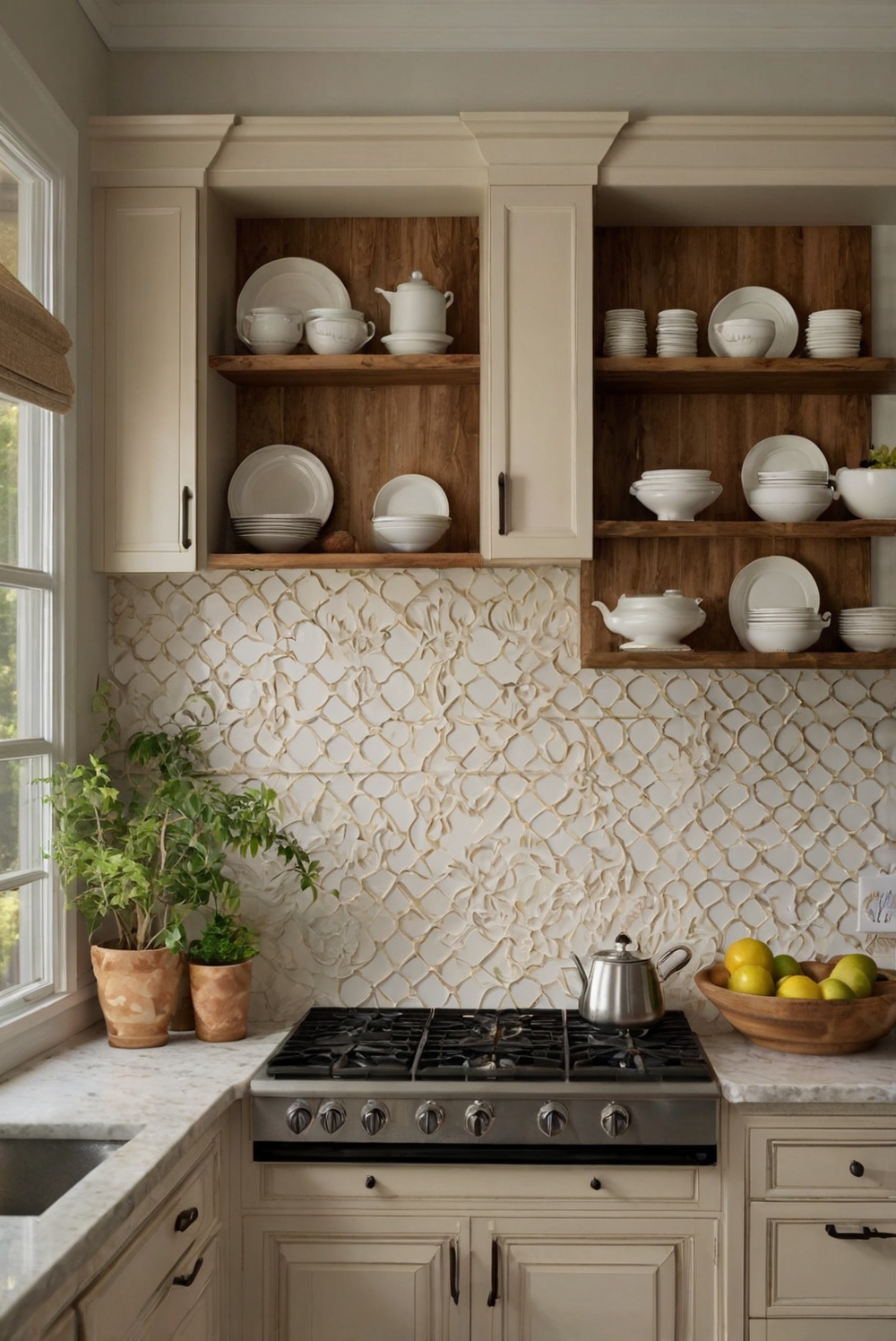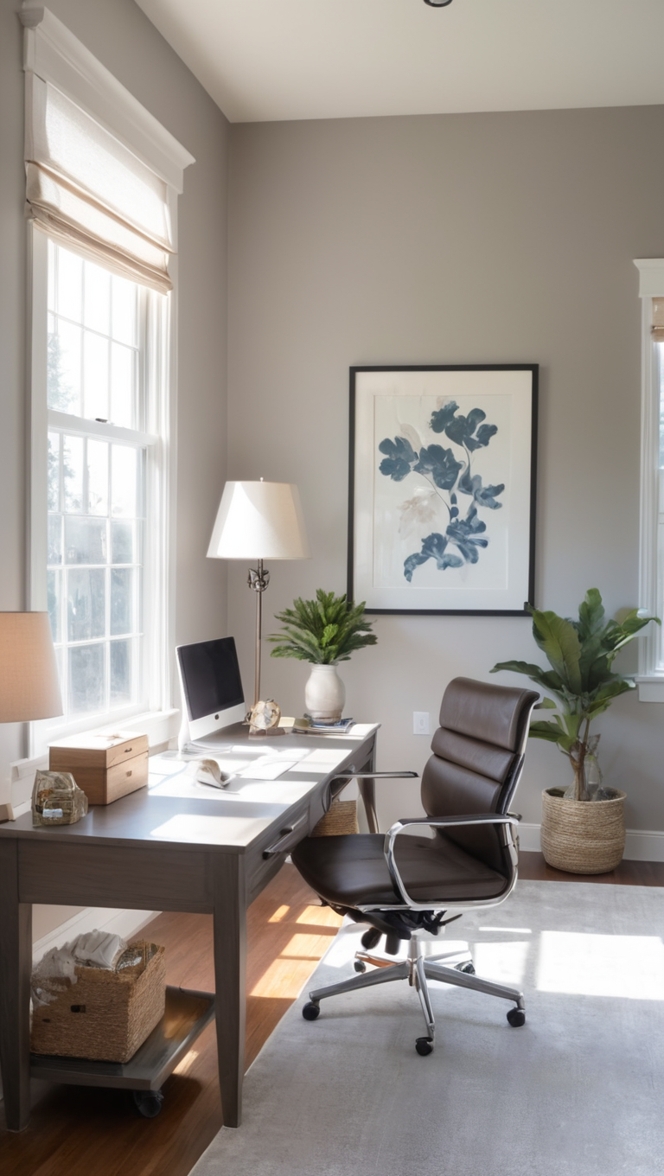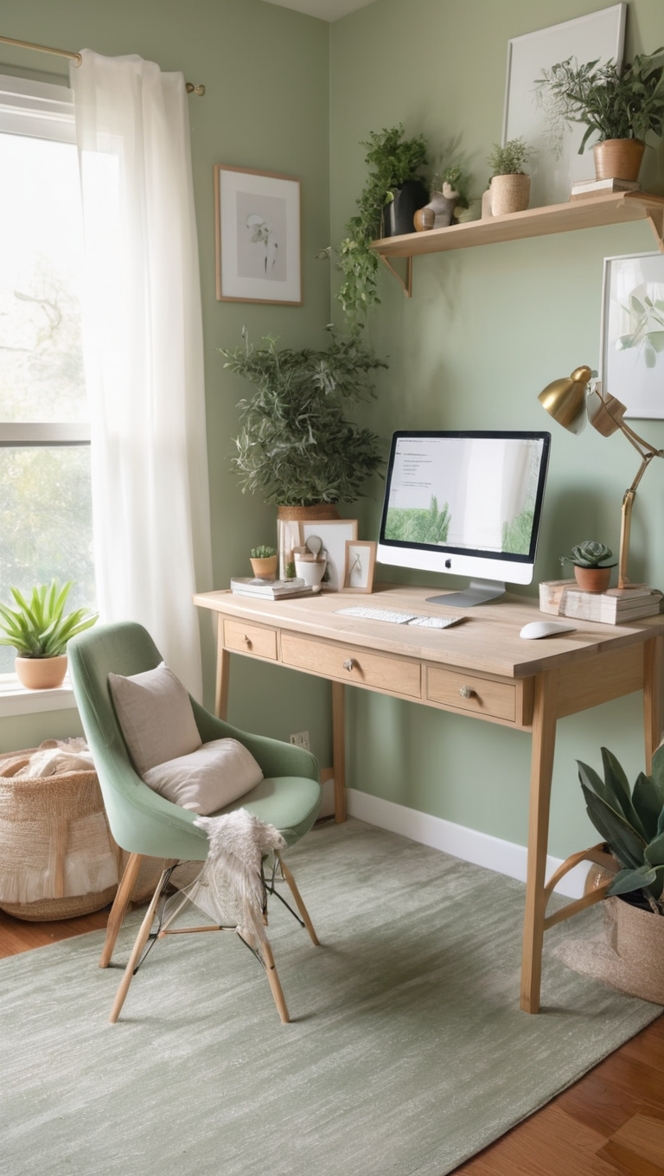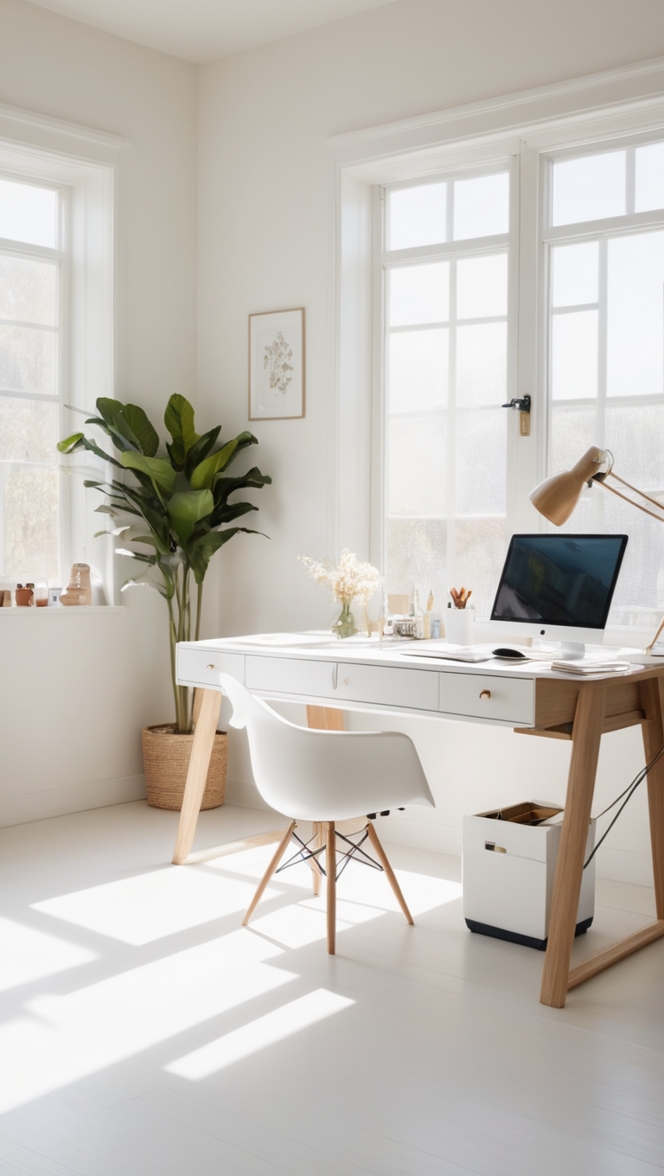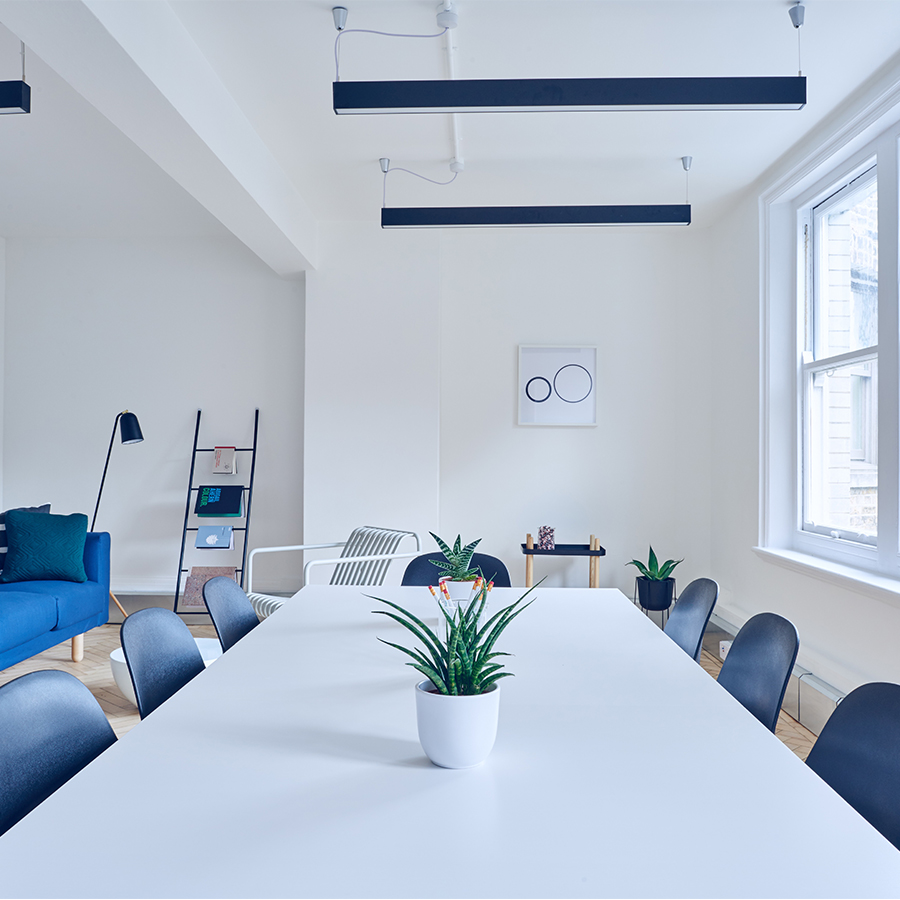Discover the benefits of open shelving in the kitchen and how it can enhance your space. Find out how this design trend can transform your cooking area.
Benefits of open shelving in the kitchen include:
1. **Enhances the feeling of openness and spaciousness**
2. **Showcases beautiful dishware and decor**
3. **Makes accessing frequently used items easier**
4. **Encourages organization and tidiness**
5. **Can be a budget-friendly option**
By utilizing open shelving, you can create a visually appealing and functional kitchen space. To maintain organization, consider grouping similar items together and regularly decluttering. You may also want to use baskets or containers for smaller items. Experiment with different arrangements to find what works best for your kitchen.
Open shelving in the kitchen has become a popular trend in recent years, offering both practicality and aesthetic appeal. If you are considering incorporating open shelving into your kitchen design, it’s important to understand the benefits it can bring to your space. In this article, we will explore the advantages of open shelving and provide useful tips on how to make the most of this design choice.
How to effectively organize items on open shelving in the kitchen?
Organizing items on open shelving requires a thoughtful approach to ensure both functionality and visual appeal. To effectively organize items on open shelving in the kitchen, consider the following tips:
– Group similar items together: Arrange items by category to make it easier to locate things when needed. For example, group all cooking utensils together, all dinnerware in one section, and so on.
– Use containers and baskets: Store loose items in containers or baskets to prevent clutter and create a more cohesive look. This also helps to keep smaller items organized and easily accessible.
– Use vertical space: Take advantage of the vertical space on open shelving by using hooks or hanging racks to store pots, pans, or mugs. This can free up valuable shelf space for other items.
– Display decorative items: In addition to functional items, consider incorporating decorative pieces such as plants, artwork, or vintage kitchenware to add visual interest to the shelves.
– Rotate items: Periodically rotate the items on display to keep the shelves looking fresh and prevent dust buildup. This also allows you to showcase different items based on the season or your mood.
What are the potential risks of using open shelving in the kitchen?
While open shelving can enhance the overall look of a kitchen, it is important to be aware of the potential risks associated with this design choice. Some of the risks of using open shelving in the kitchen include:
– Dust and grease buildup: Open shelving can accumulate dust and grease more easily than closed cabinets, requiring more frequent cleaning to keep the shelves looking tidy.
– Limited storage space: Open shelving may not offer as much storage space as traditional cabinets, making it challenging to store bulky or less aesthetically pleasing items out of sight.
– Risk of breakage: Items displayed on open shelves are more exposed and vulnerable to accidental breakage, especially in high-traffic areas of the kitchen.
– Maintenance requirements: Open shelving requires regular upkeep to maintain its appearance, such as dusting, decluttering, and occasional reorganizing.
– Style cohesion: It can be challenging to maintain a cohesive and visually appealing look on open shelves, as they are constantly on display and may require frequent rearranging.
How can open shelving enhance the overall aesthetic of a kitchen space?
Open shelving can enhance the overall aesthetic of a kitchen space in several ways, including:
– Creating an open and airy feel: Open shelving can make a kitchen appear larger and more spacious by eliminating visual barriers created by closed cabinets.
– Showcasing personal style: Open shelving provides an opportunity to display beloved cookware, dishes, or decorative items that reflect your personal style and add character to the space.
– Adding visual interest: Open shelving allows for easy access to items and creates visual interest by showcasing textures, colors, and shapes that add depth to the kitchen design.
– Creating a focal point: Well-styled open shelves can serve as a focal point in the kitchen, drawing the eye and creating a sense of balance in the space.
– Allowing for easy customization: Open shelving offers flexibility in terms of arrangement and design, allowing you to easily update the look of your kitchen by rearranging items or adding new decor elements.
Can I use open shelving in a small kitchen to create a sense of openness?
Yes, open shelving can be a great design choice for a small kitchen to create a sense of openness and prevent the space from feeling cramped. When using open shelving in a small kitchen, consider the following tips:
– Opt for light colors: Choose light-colored shelves to create a sense of airiness and maximize natural light in the space.
– Minimize clutter: Keep the shelves organized and clutter-free to prevent the space from feeling overwhelming. Consider using containers or baskets to corral loose items.
– Utilize vertical space: Make use of the vertical space on open shelves by stacking items or using hooks to hang pots, pans, or mugs. This can help free up counter space and make the kitchen feel more open.
– Select slim shelving units: Choose slim and minimalistic shelving units that do not protrude too far into the room, allowing for easy movement around the kitchen.
– Mix and match storage solutions: Combine open shelving with closed cabinets or drawers to create a balanced look and provide additional storage options for less visually appealing items.
What are the benefits of using open shelving in a kitchen compared to traditional cabinets?
The benefits of using open shelving in a kitchen compared to traditional cabinets include:
– Visual appeal: Open shelving creates an open and airy feel in the kitchen, allowing you to showcase your favorite items and personalize the space.
– Accessibility: Open shelving makes it easy to access frequently used items, reducing the time spent searching through cluttered cabinets.
– Space-saving: Open shelving can make a small kitchen feel more spacious by eliminating the need for bulky cabinets and creating visual depth.
– Cost-effective: Open shelving is often more affordable than traditional cabinets, making it a budget-friendly option for kitchen updates.
– Design flexibility: Open shelving offers flexibility in terms of arrangement and styling, allowing you to easily update the look of your kitchen without major renovations.
How to maintain open shelving to keep it looking clean and organized?
To maintain open shelving and keep it looking clean and organized, follow these tips:
– Regular cleaning: Dust and wipe down the shelves regularly to prevent buildup of dirt, grease, or kitchen debris.
– Declutter regularly: Periodically go through the items on the shelves and declutter unnecessary or unused items to keep the space organized.
– Use containers and baskets: Store loose items in containers or baskets to prevent clutter and maintain a cohesive look.
– Rotate items: Rotate the items on display periodically to keep the shelves looking fresh and prevent dust buildup.
– Avoid overcrowding: Do not overcrowd the shelves with too many items, as this can make the space feel cluttered and visually overwhelming.
– Consider the placement: Place items strategically on the shelves to create visual interest and balance, taking into account both functionality and aesthetics.
How to choose the right materials for open shelving that are both stylish and durable?
When choosing materials for open shelving in the kitchen, consider the following factors:
– Durability: Select materials that are durable and easy to clean, such as stainless steel, wood, or glass. These materials are less prone to wear and tear and can withstand the demands of a kitchen environment.
– Style: Choose materials that complement the overall style of your kitchen, whether it’s modern, rustic, industrial, or traditional. Consider the color, texture, and finish of the materials to ensure they harmonize with the existing design elements.
– Maintenance: Opt for materials that are easy to maintain and resistant to stains or scratches. Avoid materials that require excessive care or are prone to damage from moisture or heat.
– Budget: Factor in your budget when selecting materials for open shelving, as some materials may be more costly than others. Consider the long-term investment and choose materials that offer a good balance of cost and quality.
In conclusion, open shelving in the kitchen can offer a range of benefits, from enhancing the overall aesthetic of the space to creating a sense of openness and accessibility. By effectively organizing items, understanding the potential risks, and selecting the right materials, you can transform your kitchen into a stylish and functional space that reflects your personal style. Embrace the versatility and charm of open shelving to elevate your kitchen design and enhance your cooking experience.

